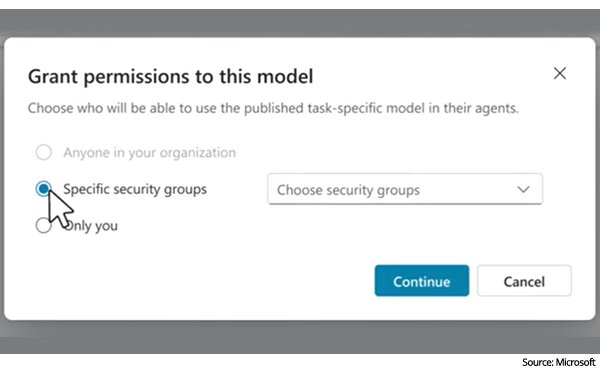
Microsoft has introduced a way for companies to train AI
models using their own company data, workflows and processes without the need for a team of data scientists.
The platform -- Microsoft 365 Copilot Tuning, which debuted at Microsoft Build
2025, is a “low-code” model in Microsoft Copilot Studio.
The company has also introduced multiagent orchestration to enable agents to work together as a team, with human oversight
and direction.
Custom training models inherit the language and positions of the source content. Once integrated into an agent, can be authorized for others to have access.
Faster experimentation and iteration with control of the AI development
gives organizations the ability to test new ideas and iterate on solutions more quickly. It also could help brands develop new ways to buy media or budget ad campaigns.
advertisement
advertisement
For
example, a brand can create an agent describing their style and expertise — automating document creation and drafting campaigns that describe the types of products they sell, and might pull from
online literature and website content.
A consulting company can tune agents for specific industries based on subject-matter expertise. The agents and data operate securely within the Microsoft
365 service boundary.
In a blog post, Microsoft explained its vision for a world in which agents operate across individual, organizational, team and end-to-end business contexts.
This
vision of the internet is an open agentic web, where AI agents make decisions and perform tasks on behalf of users or organizations.
Other news included the launch of features in GitHub,
Azure AI Foundry, and Windows.
Microsoft evolved GitHub Copilot from an in-editor assistant to an agentic AI partner with an asynchronous coding agent integrated into the GitHub
platform.
The company also introduced Windows AI Foundry for developers. Simple model APIs support vision and language tasks, so developers can manage and run open source large language models
(LLMs) via Foundry Local. Then there’s Azure AI Foundry Models and new tools for model evaluation.